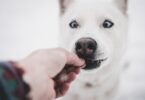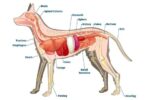The bond between humans and dogs is profound, often described as unparalleled in the animal kingdom. This connection goes beyond mere companionship; it reflects something deeper about ourselves. In the following exploration, we delve into the concept that your dog is your mirror, uncovering the rich tapestry of emotions and insights woven into this unique relationship.
Definition of “Your Dog is Your Mirror”
At its core, the idea that “your dog is your mirror” suggests that how we interact with our canine companions reflects aspects of our personalities, emotions, and behaviors. It proposes that our dogs serve as reflections of our inner selves, mirroring our strengths, weaknesses, and emotional states.
Brief Overview of the Importance of the Relationship Between Dogs and Their Owners
The relationship between dogs and their owners is not merely one of convenience or utility; it is a deeply interwoven bond that fulfills fundamental emotional needs for both parties involved. Dogs offer unconditional love, companionship, and loyalty, providing emotional support and companionship that enriches our lives in myriad ways. Likewise, as responsible caretakers, we provide our dogs with care, sustenance, and affection, forming a symbiotic relationship built on mutual trust and understanding.
This relationship has far-reaching implications for our emotional well-being, with numerous studies highlighting the positive effects of dog ownership on mental health. From reducing stress and anxiety to promoting feelings of happiness and fulfillment, the companionship of a dog can profoundly impact our overall quality of life.
In essence, the relationship between dogs and their owners transcends the boundaries of species, encompassing a deep connection rooted in mutual affection and understanding. As we explore the concept that “your dog is your mirror,” we embark on a journey of self-discovery, uncovering the reflections of our hearts and souls mirrored in the eyes of our beloved canine companions.
Historical and Cultural Perspectives
Throughout history and across cultures, the bond between humans and dogs has been revered, celebrated, and deeply ingrained in societal beliefs and practices. From ancient civilizations to modern-day societies, the connection between humans and dogs transcends mere companionship, embodying profound emotional, spiritual, and symbolic significance.
Examination of Historical and Cultural Beliefs Surrounding the Connection Between Humans and Dogs
In ancient Egypt, dogs were revered as symbols of protection, loyalty, and guardianship. They were often depicted in religious iconography, accompanying their owners in the afterlife as faithful companions. Similarly, in Greek mythology, dogs were associated with various gods and goddesses, embodying traits such as loyalty (Hades’ three-headed dog Cerberus) and healing (the goddess Artemis’ hunting dogs).
In Native American cultures, dogs held sacred roles as spiritual guides, protectors, and hunters. Among the Navajo, for example, dogs were believed to possess the ability to guide souls safely to the afterlife. In traditional Japanese culture, the Akita breed was revered for its loyalty and bravery, symbolizing good fortune and protection.
Examples from Various Cultures Highlighting the Significance of This Bond
In Nordic folklore, the legendary Norse god Odin was accompanied by two wolves, Geri and Freki, symbolizing companionship and the bond between man and beast. In Hindu mythology, the god Dattatreya is often depicted with four dogs representing the four Vedas and the pursuit of knowledge.
These examples underscore the universal significance of the relationship between humans and dogs, transcending geographical and cultural boundaries. Whether as symbols of protection, companionship, or spiritual guidance, dogs have occupied a revered place in the collective consciousness of humanity, reflecting the timeless and enduring bond between our two species.
Scientific Basis of Canine Behavior
Dogs have long been recognized for their remarkable ability to mirror the emotions and behaviors of their owners, a phenomenon deeply rooted in their evolutionary history and cognitive abilities. This mirroring effect is a complex interplay of social learning, emotional contagion, and innate communication instincts.
Explanation of How Dogs Mirror Their Owners’ Emotions and Behaviors
Dogs are highly social animals sensitive to human cues and emotions. They possess the remarkable ability to interpret subtle changes in our facial expressions, body language, and vocalizations, allowing them to empathize and respond accordingly. Research has shown that dogs can exhibit behaviors such as yawning, barking, or even mirroring specific movements in response to their owners’ emotional states.
Moreover, dogs have evolved alongside humans for thousands of years, forging a deep bond built on mutual trust and understanding. This co-evolutionary process has shaped their behavior to align closely with ours, enabling them to anticipate our needs and emotions intuitively.
Insights from Studies in Behavioral Psychology and Animal Cognition
Studies in behavioral psychology and animal cognition have provided valuable insights into the mechanisms underlying canine behavior. Research has shown that dogs possess advanced social cognitive abilities, including perspective-taking, empathy, and emotional contagion.
For example, experiments have demonstrated that dogs exhibit contagious yawning in response to seeing their owners yawn, suggesting a form of emotional contagion akin to that observed in humans. Similarly, studies have shown that dogs can accurately infer human intentions and emotions based on subtle cues, highlighting their remarkable sensitivity to human social cues.
Furthermore, neuroimaging studies have revealed striking similarities in the neural processing of social cues between humans and dogs, further supporting the notion of a shared emotional bond between the two species.
In summary, the scientific basis of canine behavior underscores the intricate interplay of social learning, emotional contagion, and innate communication instincts. Dogs’ ability to mirror their owners’ emotions and behaviors is a testament to the deep and complex bond forged through thousands of years of coevolution and companionship.
Case Studies and Real-Life Examples
Real-life anecdotes and case studies offer compelling evidence of the ways in which dogs mirror their owners’ traits and behaviors, providing poignant insights into the depth of the human-canine bond.
Illustrative Anecdotes Showcasing Instances Where Dogs Reflect Their Owners’ Traits or Behaviors
In one case, a highly anxious individual found solace in their canine companion, a rescue dog with a history of trauma. Through patient nurturing and unconditional love, the dog gradually mirrored their owner’s calm demeanor, overcoming its own anxiety and fear.
Another example involves a highly active and outgoing owner whose dog exhibits similar characteristics, eagerly joining in outdoor adventures and social interactions. Their shared enthusiasm for exploration and play strengthens their bond and enhances their mutual well-being.
Personal Stories or Experiences Shared by Dog Owners
Countless dog owners have shared personal stories of how their canine companions have mirrored their emotions and behaviors, serving as steadfast allies and confidants through life’s trials and triumphs.
For instance, a grieving widow found comfort in her dog’s silent companionship, as it mirrored her own somber mood and provided a source of solace during moments of loneliness and despair.
Similarly, a shy and reserved individual found newfound confidence and companionship in their outgoing and affectionate dog, whose unwavering loyalty and love served as a catalyst for personal growth and self-discovery.
These real-life examples underscore the profound impact of the human-canine bond, illuminating the ways in which dogs reflect and enrich our lives through their unconditional love, empathy, and companionship.







Leave a Comment